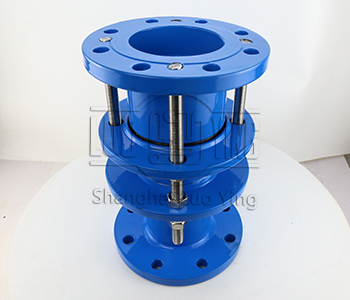What are the types of rotary compensators? Teach you how to care for and maintain these?
Nov-23-10
What are the types of rotary compensators? Teach you how to care for and maintain these? Rotary compensators, also known as rotary expansion joints or rotary bellows, are designed to absorb axial, angular, and lateral movements in rotary piping systems. These compensators are crucial in preventing stress buildup, leakage, and damage in applications that involve rotating equipment. There are various types of rotary compensators available, each with unique features and benefits. Additionally, proper care and maintenance are essential to ensure their long-term performance. Let's explore the different types and learn how to care for and maintain them:
Single-ply Rotary Compensators: Single-ply compensators consist of a single bellows element and are suitable for applications with low pressure and temperature requirements. They offer cost-effective solutions in systems with low movement requirements.
Multi-ply Rotary Compensators: Multi-ply compensators are made up of multiple bellows layers. These compensators provide increased flexibility and higher pressure and temperature capabilities compared to single-ply compensators. They are commonly used in high-pressure and high-temperature applications.
Universal Rotary Compensators: Universal compensators are designed to accommodate multiple types of movement, including axial, angular, and lateral movements. They have the capability to absorb both small and large movements and are commonly used in complex piping systems.

Hinged Rotary Compensators: Hinged compensators have a hinged design that allows for angular movement in a single direction while restricting movement in other directions. They are commonly used in applications with limited space or specific movement requirements.
Caring for and maintaining rotary compensators is crucial for their optimal performance and longevity. Here are some key tips to consider:
Regular Inspection: Perform routine inspections of the compensators to check for signs of damage, leakage, or wear and tear. Look for cracks, corrosion, or excessive movement that may indicate a problem.
Cleanliness: Keep the compensators clean and free from debris, dirt, or foreign contaminants. Regularly clean the bellows and surrounding areas to prevent potential blockages or damage.
Proper Alignment: Ensure that the compensators are properly aligned within the system. Misalignment can cause stress concentrations and affect the performance of the compensators.
Temperature and Pressure Considerations: Operate the compensators within their specified temperature and pressure limits. Excessive pressure or temperature can lead to premature failure or reduced performance.
Follow Manufacturer Guidelines: Adhere to the manufacturer's recommendations for installation, operation, and maintenance. They will provide specific guidelines for the care and maintenance of the specific compensator type.
Maintenance Records: Maintain detailed records of maintenance activities, inspections, and any repairs performed on the compensators. This will help track the history of the compensators and identify any recurring issues.
In conclusion, understanding the different types of rotary compensators and implementing proper care and maintenance practices are essential for their reliable performance. Regular inspections, cleanliness, proper alignment, adherence to temperature and pressure limits, and following manufacturer guidelines will contribute to the longevity of rotary compensators and ensure the safe and efficient operation of the piping system.

